Non-Profit Spotlight: Ridge to Reefs
By Amy Nelson
 Restoring habitats in dynamic, coastal environments can be tricky, and the advice offered by experts featured in this issue of Leaf Litter can be invaluable at every stage of restoration: selecting your site and understanding its ecology and hydrology; addressing stressors and establishing measurable performance criteria, implementing, monitoring and adjusting your design; and building lasting local partnerships and restoration capacity. We’re delighted to shine Leaf Litter’s non-profit spotlight on one organization that already seems to be operating by such standards: Ridge to Reefs.
Restoring habitats in dynamic, coastal environments can be tricky, and the advice offered by experts featured in this issue of Leaf Litter can be invaluable at every stage of restoration: selecting your site and understanding its ecology and hydrology; addressing stressors and establishing measurable performance criteria, implementing, monitoring and adjusting your design; and building lasting local partnerships and restoration capacity. We’re delighted to shine Leaf Litter’s non-profit spotlight on one organization that already seems to be operating by such standards: Ridge to Reefs.
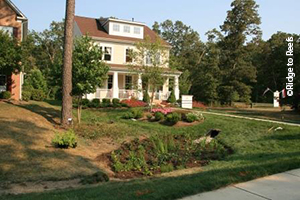
Ridge to Reefs strives to protect and restore coastal ecosystems, primarily coral reefs, mangroves, and tidal wetlands, by looking upland and addressing the key causes of degradation, and then building upon those efforts to enhance the policies, economies, resilience, and well-being of coastal communities.
In regions where the organization currently works—the Chesapeake Bay and Caribbean—key stressers include land-based sources of pollution, an issue that is very familiar to Ridge to Reefs founder, biologist Paul Sturm.
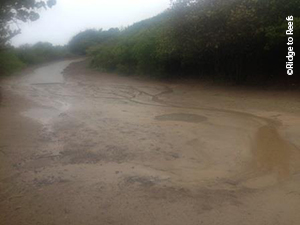
Before starting Ridge to Reefs, Sturm was a director at the Center for Watershed Protection, where he spent more than a decade helping communities manage watersheds and improve water quality by integrating green infrastructure to address issues such as erosion and sediment control, storm water management, and illicit discharges.
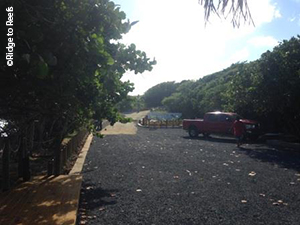
The desire to see more funding go directly to coastal communities (rather than large consulting firms or government entities with poor governance), and for those communities to have the skills necessary to use those resources to restore coastal ecosystems, is what led Sturm to start Ridge to Reefs.
“The people in the local communities are the ones who are the most passionate about protecting their reefs and restoring local ecosystems,” said Sturm. “I wanted to help unleash the capacity and local know-how that is already there but untapped.”
To do this, Ridge to Reefs helps communities identify pollution problems, understand them in a watershed context, secure funding for and develop solutions, and build local capacity to implement them in a lasting way. Essential to this formula is the forging of strong, local partnerships. Once forged, such partnerships can yield impressive results.
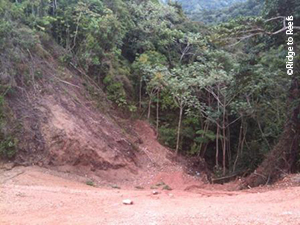
A powerful example can be seen in the 180-square-mile Guánica watershed in southwestern Puerto Rico, home to one of the island’s largest complexes of coral reefs. Government policies in the region had led farmers to switch from shade grown coffee on steep slopes within a forest environment to sun grown coffee, where the land is stripped bare and coffee trees are planted amidst bare soils. The resulting sediment losses from the mountains fill reservoirs vital for drinking water and flow downstream to coral reef areas.

To make matters worse, the largest freshwater body and wetland complex in Puerto Rico, Guánica Lagoon, was drained in the 1950s to exploit the area for the short-lived sugar cane industry. Recognizing the need for restoration, Ridge to Reefs helped to start the Puerto Rican organization Protectores de Cuencas.
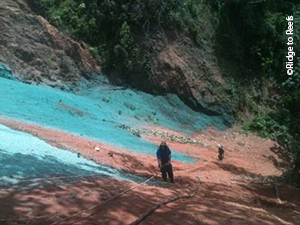
Together, the organizations worked to stabilize the soils on those steep, farmed slopes in a way that not only reduced sediment transport, but added native vegetation and habitat and stimulated the ongoing conversion of hundreds of acres of sun coffee production to shade, which will further improve the regional ecology.
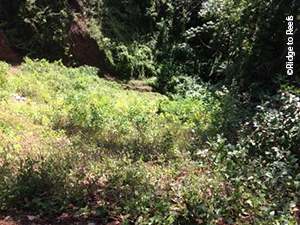
These results are real, and tangible, but even more gratifying for Sturm is the transfer of skills and knowledge that has occurred. “My colleagues in Puerto Rico can now stabilize 30% to 80% slopes,” he said. “Stormwater management and sediment traps are now in their wheelhouse.” The partnership is expanding its efforts, as the collaborating organizations are currently in the process of permitting treatment wetlands to reduce nutrients from inadequately treated sewage impacting coastal waters.
“Partnerships are absolutely critical,” said Sturm. “Even when we go to get permits and things like that, it’s important to have strong partnerships with people who know the politics and are able to get things done locally.” Such relationships are not made overnight, however.
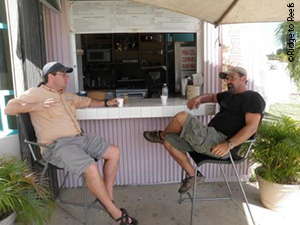
They may take years, and they require more than simply attending meetings. “It’s important to spend time with people in the field, and break bread with people,” advises Sturm. “It also helps ensure that your collective thinking is truly collective.”
Key challenges in some of the island communities are often political, and related to the fact that even in U.S. jurisdictions, basic Clean Water Act level policy is in place but often not enforced. “You can’t just come in and make demands, though,” cautions Sturm. “Policy changes have to be the result of local decision making. That’s where good work, good projects, and good partners come into play.”
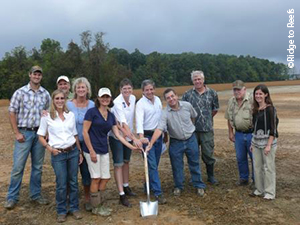
Guiding the organization is a far-reaching, five pronged mission to address land-based pollution, forge partnerships, inform policy, improve economics, and integrate renewable energy. Though Ridge to Reefs has yet to claim success in all five of those areas with any one project, progress can be viewed in a fashion similar to emergency room triage.
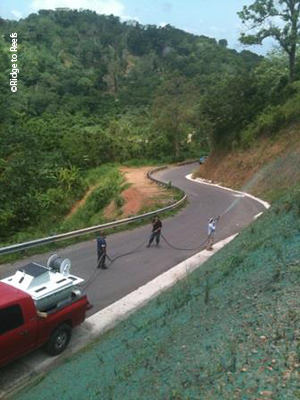
Working with a community and addressing the land-based pollution that is harming their coastal ecosystems is, according to Sturm, “like putting bandages on and stopping the bleeding.” From there, building strong partnerships and local capacity becomes critical–for continuity and for affecting policy. Then, communities can move on to renewable energy, a logical step for islands with no oil, but plenty of sun and wind.
“These island communities are paying exorbitant fees for a broken form of energy that is killing their coral reefs when they could be producing energy,” said Sturm. With small scale renewable energy, says Sturm, comes a boost in economy and quality of life—the kind of boost that helps enable communities to say “no” to things like Club Med and “yes” to sustainable development.
The organization’s reach is growing along with its success. “It’s like a snowball effect,” said Sturm. “We may start with one reef area in one watershed, and then, working with our colleagues in the local community, our goals become more ambitious.”
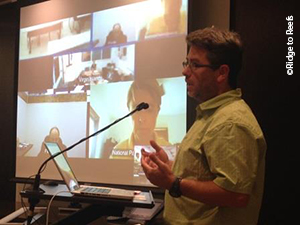
Ridge to Reefs hopes to work with communities in American Samoa, the U.S. Virgin Islands, and Barbuda. Sturm’s ultimate goal for the organization is to help shepherd local restoration efforts on islands and to support accelerations of restoration in the Chesapeake. He intends to work toward that goal by using monitoring and local partnerships to help target critical areas for implementation in urban and rural areas, and by expanding the effectiveness of traditional agricultural BMPs by improving the integration of green infrastructure and natural processes to address areas with high nutrient loading.
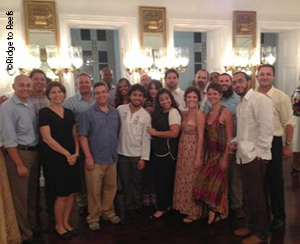
“We want to help more communities so they can take back the reigns of restoration and prepare their areas for climate change.” For this to happen, he says, the concept of partnership will need to expand.
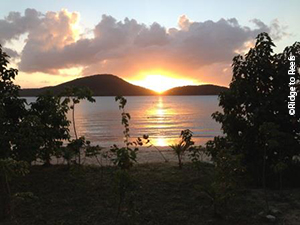
“We cannot think of coral reef protection one-dimensionally any more,” said Sturm. “The restoration community; the sewage community; the fisheries community, the Marine Protected Areas community…all of these entities need to work in unison if we’re seriously going to bring back reefs and keep them into the next century.“
Ridge to Reefs is primarily funded through grants. You can support Ridge to Reefs by donating money or time. To learn more, including how Ridge to Reefs may be able to help your organization, visit www.ridgetoreefs.org.
Ridge to Reefs strives to protect and restore coastal ecosystems, primarily coral reefs, mangroves, and tidal wetlands, by looking upland and addressing the key causes of degradation, and then building upon those efforts to enhance the policies, economies, resilience, and well-being of coastal communities.
In regions where the organization currently works—the Chesapeake Bay and Caribbean—key stressers include land-based sources of pollution, an issue that is very familiar to Ridge to Reefs founder, biologist Paul Sturm.
Before starting Ridge to Reefs, Sturm was a director at the Center for Watershed Protection, where he spent more than a decade helping communities manage watersheds and improve water quality by integrating green infrastructure to address issues such as erosion and sediment control, storm water management, and illicit discharges.
The desire to see more funding go directly to coastal communities (rather than large consulting firms or government entities with poor governance), and for those communities to have the skills necessary to use those resources to restore coastal ecosystems, is what led Sturm to start Ridge to Reefs.
“The people in the local communities are the ones who are the most passionate about protecting their reefs and restoring local ecosystems,” said Sturm. “I wanted to help unleash the capacity and local know-how that is already there but untapped.”
To do this, Ridge to Reefs helps communities identify pollution problems, understand them in a watershed context, secure funding for and develop solutions, and build local capacity to implement them in a lasting way. Essential to this formula is the forging of strong, local partnerships. Once forged, such partnerships can yield impressive results.
A powerful example can be seen in the 180-square-mile Guánica watershed in southwestern Puerto Rico, home to one of the island’s largest complexes of coral reefs. Government policies in the region had led farmers to switch from shade grown coffee on steep slopes within a forest environment to sun grown coffee, where the land is stripped bare and coffee trees are planted amidst bare soils. The resulting sediment losses from the mountains fill reservoirs vital for drinking water and flow downstream to coral reef areas.
To make matters worse, the largest freshwater body and wetland complex in Puerto Rico, Guánica Lagoon, was drained in the 1950s to exploit the area for the short-lived sugar cane industry. Recognizing the need for restoration, Ridge to Reefs helped to start the Puerto Rican organization Protectores de Cuencas.
Together, the organizations worked to stabilize the soils on those steep, farmed slopes in a way that not only reduced sediment transport, but added native vegetation and habitat and stimulated the ongoing conversion of hundreds of acres of sun coffee production to shade, which will further improve the regional ecology.
These results are real, and tangible, but even more gratifying for Sturm is the transfer of skills and knowledge that has occurred. “My colleagues in Puerto Rico can now stabilize 30% to 80% slopes,” he said. “Stormwater management and sediment traps are now in their wheelhouse.” The partnership is expanding its efforts, as the collaborating organizations are currently in the process of permitting treatment wetlands to reduce nutrients from inadequately treated sewage impacting coastal waters.
“Partnerships are absolutely critical,” said Sturm. “Even when we go to get permits and things like that, it’s important to have strong partnerships with people who know the politics and are able to get things done locally.” Such relationships are not made overnight, however.
They may take years, and they require more than simply attending meetings. “It’s important to spend time with people in the field, and break bread with people,” advises Sturm. “It also helps ensure that your collective thinking is truly collective.”
Key challenges in some of the island communities are often political, and related to the fact that even in U.S. jurisdictions, basic Clean Water Act level policy is in place but often not enforced. “You can’t just come in and make demands, though,” cautions Sturm. “Policy changes have to be the result of local decision making. That’s where good work, good projects, and good partners come into play.”
Guiding the organization is a far-reaching, five pronged mission to address land-based pollution, forge partnerships, inform policy, improve economics, and integrate renewable energy. Though Ridge to Reefs has yet to claim success in all five of those areas with any one project, progress can be viewed in a fashion similar to emergency room triage.
Working with a community and addressing the land-based pollution that is harming their coastal ecosystems is, according to Sturm, “like putting bandages on and stopping the bleeding.” From there, building strong partnerships and local capacity becomes critical–for continuity and for affecting policy. Then, communities can move on to renewable energy, a logical step for islands with no oil, but plenty of sun and wind.
“These island communities are paying exorbitant fees for a broken form of energy that is killing their coral reefs when they could be producing energy,” said Sturm. With small scale renewable energy, says Sturm, comes a boost in economy and quality of life—the kind of boost that helps enable communities to say “no” to things like Club Med and “yes” to sustainable development.
The organization’s reach is growing along with its success. “It’s like a snowball effect,” said Sturm. “We may start with one reef area in one watershed, and then, working with our colleagues in the local community, our goals become more ambitious.”
Ridge to Reefs hopes to work with communities in American Samoa, the U.S. Virgin Islands, and Barbuda. Sturm’s ultimate goal for the organization is to help shepherd local restoration efforts on islands and to support accelerations of restoration in the Chesapeake. He intends to work toward that goal by using monitoring and local partnerships to help target critical areas for implementation in urban and rural areas, and by expanding the effectiveness of traditional agricultural BMPs by improving the integration of green infrastructure and natural processes to address areas with high nutrient loading.
“We want to help more communities so they can take back the reigns of restoration and prepare their areas for climate change.” For this to happen, he says, the concept of partnership will need to expand.
“We cannot think of coral reef protection one-dimensionally any more,” said Sturm. “The restoration community; the sewage community; the fisheries community, the Marine Protected Areas community…all of these entities need to work in unison if we’re seriously going to bring back reefs and keep them into the next century.“
Ridge to Reefs is primarily funded through grants. You can support Ridge to Reefs by donating money or time. To learn more, including how Ridge to Reefs may be able to help your organization, visit www.ridgetoreefs.org.
